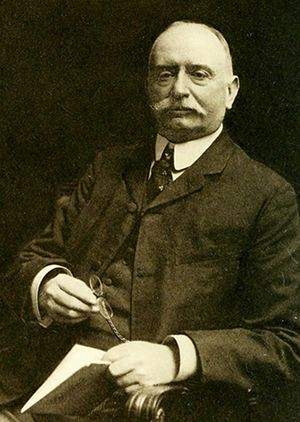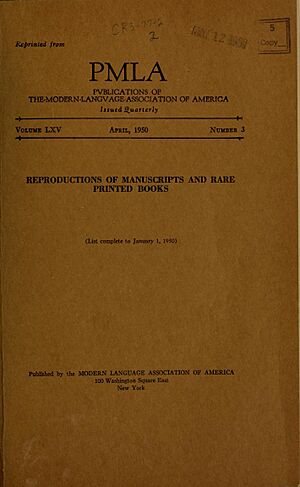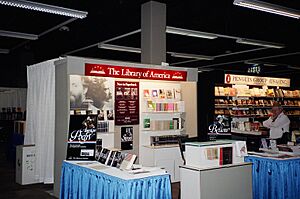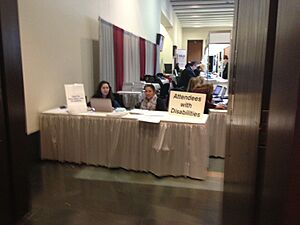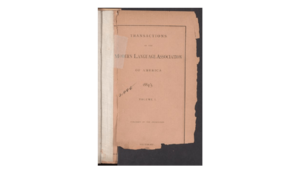Modern Language Association facts for kids
 |
|
| Abbreviation | MLA |
|---|---|
| Formation | 1883 |
| Founder | Aaron Marshall Elliott |
| Type | Learned society |
| Headquarters | New York City, New York, U.S. |
| Fields | |
|
President
|
Christopher John Newfield |
|
Executive director
|
Paula M. Krebs |
The Modern Language Association of America, or MLA, is a very important group in the United States. It is for people who study and teach language and literature. The MLA wants to "make the study and teaching of language and literature stronger."
More than 20,000 people from 100 countries are members. Most members are professors and graduate students. They study or teach English, other modern languages, and comparative literature. Even though the MLA started in the United States, its ideas and influence reach all over the world. Its main office is in New York City.
Contents
What is the MLA?
The MLA is a professional group for scholars. Scholars are people who study a lot about a certain topic. The MLA helps them learn more about languages and literature. It also helps them teach these subjects better.
How the MLA Started
The MLA began in 1883. It was a group for talking about and supporting the study of literature and modern languages. Modern languages are all languages except very old ones like Latin and Greek. The group wanted to promote the study of English, German, French, Spanish, Italian, and other modern languages and their literatures.
Who Leads the MLA?
The members of the MLA choose their leaders. These leaders are called officers. The MLA is guided by a group called the Executive Council. Members also elect this council. Paula M. Krebs is the Executive Director.
What Does the MLA Do?
The MLA does many things to help people who study language and literature.
Publishing Books and Journals
The MLA publishes several important magazines, called academic journals. One of the most famous is Publications of the Modern Language Association of America. This journal shares new ideas in literary studies. Another journal, Profession, talks about issues teachers of language and literature face.
The MLA also publishes the MLA Handbook. This book helps high school and college students write research papers. It has sold over 6.5 million copies! The MLA also has an online database called MLA International Bibliography. It lists many books and articles about language and literature.
Annual Convention
Since 1884, the MLA has held a big meeting every year. It lasts for four days. About 8,000 to 12,000 members attend this meeting. It moves to different major cities in the United States each year. This convention is very important for language and literature scholars.
Many universities and colleges use this convention to interview people for teaching jobs. The MLA also has an online list of job openings called Job Information List (JIL).
The convention has about 800 different sessions. These include talks, group discussions, poetry readings, and film showings. There are also social events and large exhibits where publishers show their books.
Online Resources
In November 2016, the MLA started Humanities Commons. This is an online place where people interested in humanities research can share their work. Other groups like the College Art Association also help with this project.
The MLA's website also has a Language Map. This map shows where people speak different languages in the United States and Canada. It uses information from the United States 2000 Census.
Discussions on Important Topics
The MLA often talks about important social issues. These include topics like race, gender, and social class. Some people have said that the MLA has focused too much on these political topics. They believe the MLA should stick to studying literature. Others argue that these topics are important to discuss in relation to literature.
Debates on Human Rights
The MLA has had discussions about human rights issues. For example, in January 2017, members voted on a proposal. This proposal asked the MLA to support a boycott of academic institutions in Israel. A boycott means refusing to do business with someone or something to protest their actions.
Some members believed Israel was violating human rights. They wanted the MLA to join a global movement called Boycott, Divestment and Sanctions (BDS). Other members disagreed. They argued that such a boycott would harm scholars and go against the MLA's main purpose.
After much debate, the MLA members voted against the boycott. The vote was 113 to 79. Groups on both sides of the issue shared their views. Some Israeli scholars even sent videos to explain their opinions.
A group called the Brandeis Center also sent a letter. They said that if the MLA supported the boycott, it would be acting beyond its original mission. Supporters of the boycott said the MLA had discussed human rights before.
In early 2025, the MLA's Executive Council decided not to let members vote on a similar proposal. This proposal would have supported BDS and talked about the situation in Gaza. The council said this would cause "legal and financial" problems for the organization. This decision led to protests from some members.
Other Related Groups
There are several groups similar to the MLA that are independent but focus on specific regions:
- Midwest Modern Language Association
- Northeast Modern Language Association
- Pacific Ancient and Modern Language Association
- Rocky Mountain Modern Language Association
- South Atlantic Modern Language Association
- South Central Modern Language Association
Groups Working with the MLA
The MLA also works with other organizations:
- Association of Departments of English
- Association of Departments of Foreign Languages
- Society for Medieval Feminist Scholarship
- The International Federation for Modern Languages and Literatures (FILLM)
See also
 In Spanish: Modern Language Association para niños
In Spanish: Modern Language Association para niños
- List of most commonly learned foreign languages in the United States
- MLA Handbook
- MLA Style Manual
- Style guide


